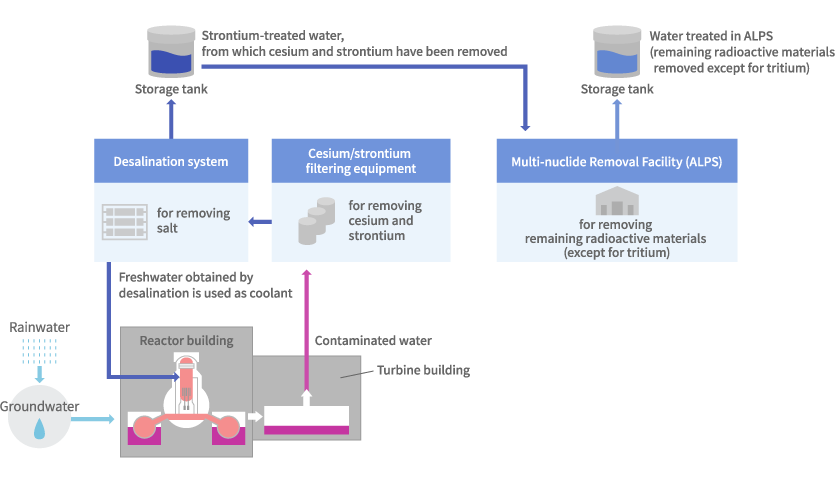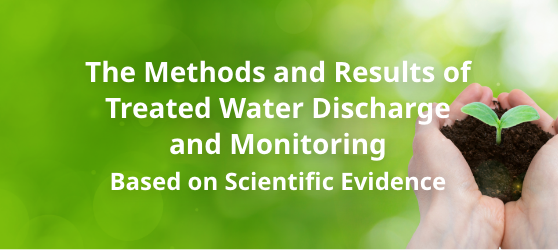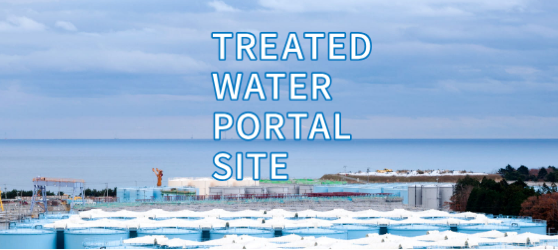Additional Information about the Status of Storage and Treatment of Accumulated Water Containing High-Level Radioactive Materials at the Fukushima Daiichi Nuclear Power Station
Purpose
Why are reports issued on the status of treatment and storage of high-level radioactive water accumulated on the first floor?
At the Fukushima Daiichi Nuclear Power Station, groundwater flowing from the mountain side infiltrates the reactor buildings and becomes mixed with water for cooling the fuel that melted due to the accident and then hardened, resulting in daily generation of water containing high-level radioactive materials (“contaminated water”).
Currently, water levels in the reactor buildings are controlled to prevent contaminated water from being released outside the buildings. To reduce the risk to the soil and ocean water in the case of leakage of contaminated water outside the buildings, and to reduce worker exposure levels, the contaminated water is treated in cesium/strontium filtering equipment and in a Multi-nuclide Removal Facility (ALPS), after which it is stored in tanks installed on higher ground.
TEPCO summarizes the latest information on treatment and storage of contaminated water and reports this in principle once a week to the Nuclear Regulation Authority.

About Attachment 1: “Status of Storage and Treatment of High-Level Radioactive Accumulated Water”
As of what time is the data?
In principle, data as of 7:00 a.m. on Thursday of each week is used.
About Attachment 2: “Status of Storage and Treatment of High-Level Radioactive Accumulated Water (Estimated)”
How are the estimates made of “stored amounts by type of water”?
The estimates of “stored amounts by type of water” are forecasts using calculations based on the actual operating performance of the filtering equipment and operating plans, etc.
About Attachment 3, “Simulation Results of Accumulated Water Treatment in Units 1–4 Turbine Buildings”
How are the “Simulation Results of Accumulated Water Treatment in Units 1–4 Turbine Buildings” prepared?
To prepare the written materials, simulations of “accumulated water levels in the turbine building” of each unit are made taking into account such factors as the accumulated water level changes from the most recent rainfall and groundwater inflow as well as the operating status of filtering equipment so that the bottom floors of buildings other than the Unit 1 to 3 reactor buildings will be revealed within 2020.
Simulations of “accumulated water levels in the turbine building of each unit including impacts of additional rainfall” are made taking into account the average rainfall amounts in the three months (Aug.–Oct.) of relatively heavy rain from typhoons, etc. in the vicinity of the Daiichi Nuclear Power Station.
















